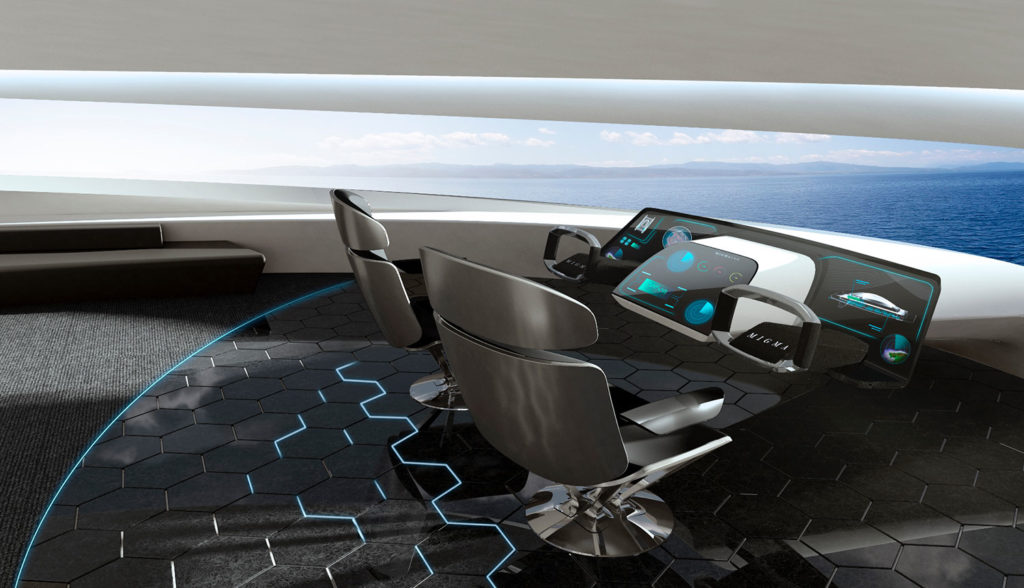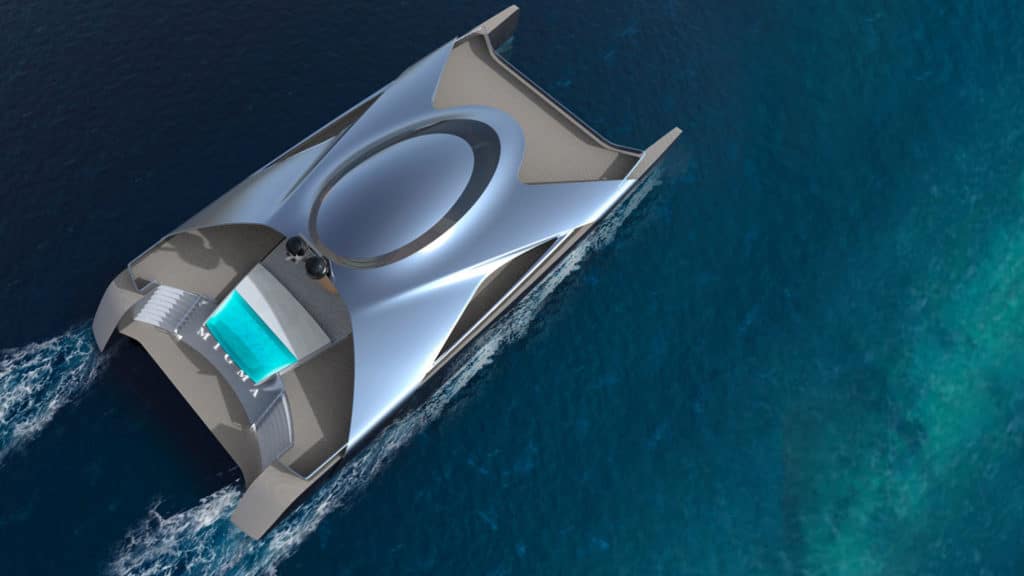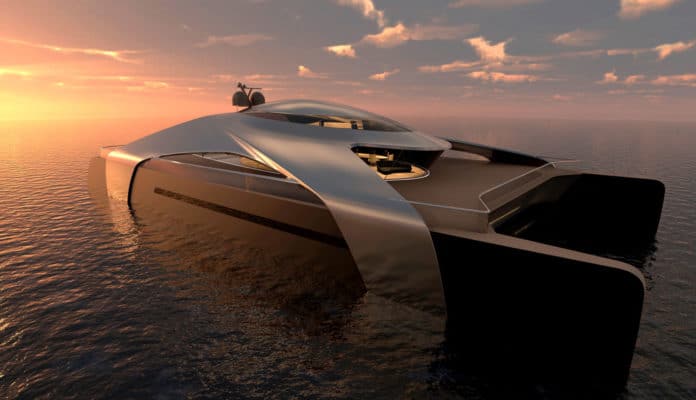The Spanish firm Ruma Design has presented its new futuristic hydrogen-powered catamaran concept that combines traditional marine design with state-of-the-art propulsion.
Named Migma, the Greek word for “mixture,” the noiseless hydrogen-powered 180 feet electric catamaran is described as “an evocation to the life of the sea through structural bionic elements where the rationality of the technique is mixed with the fluidity of nature.”
Migma catamaran is based on a minimalist and high-end aesthetic, creating a new way to understand spaces within a catamaran, where the core structure is located in the middle, and all elements grow from it. Designed to sail around the globe but in a sustainable way, the catamaran is equipped with a tank to store liquid hydrogen, lithium-ion batteries, PEM fuel cells, and two electric motors. This setup could theoretically allow the vessel to travel extremely long distances without noise, emissions, fumes, or vibrations.

With every space onboard offering 360-degree panoramic views and optimizing natural light, the Migma catamaran has a modern interior characterized by minimalist and sophisticated furniture complemented by floor-to-ceiling glass. The vessel houses a huge convertible space at its core that can be used to host meetings or as a central saloon by two families.
Also, there are two sizable staterooms that each feature ensuites and electrochromic smart glass walls facing the ocean, allowing crew members to enjoy the view or switch to pitch-black tinted glass for privacy.

The exterior of the vessel, which promises to be the future of hydrogen-powered yachting, has a futuristic look that offers a sleek silhouette and gleaming silver tones. In addition, there is a generous amount of decking along with an infinity pool and swim platform to the aft.
The electric vehicle revolution is well underway. With this, many concept designers are turning to create zero-emission alternatives that outperform their diesel-guzzling counterparts. The Pagurus solar-powered amphibious catamaran is an example of such alternatives. Other examples include a Florida sailing superyacht powered by solar sails in case of no wind and a sailboat that feeds on plastic waste.
